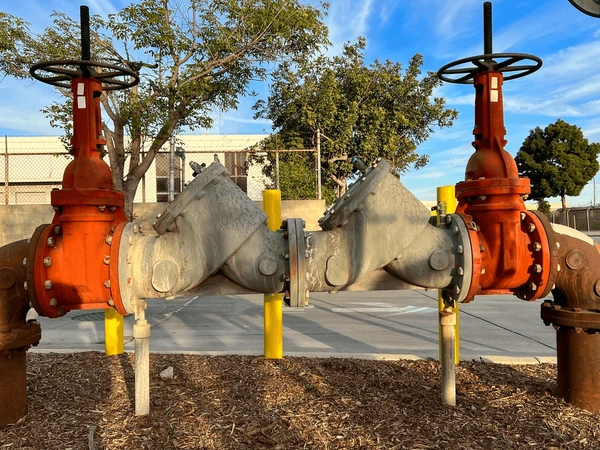backflow Prevention Device Testing
Backflow prevention devices help to prevent contaminated water from flowing back into the water supply. Contaminated water can pose a serious health risk to everyone who drinks it. Commercial properties that often use chemicals could contaminate the water supply. Some of these chemicals can be extremely dangerous, making it difficult to cleanse the water if it becomes contaminated. For this reason, it is essential for commercial property owners to have their backflow prevention devices installed and tested annually. Please do so to avoid issues.
Backflow testing must be carried out annually, or it might incurr in fines.

A backflow prevention device is a mechanism designed to prevent the reverse flow of contaminated or undesirable substances into a clean water supply system. The term “backflow” refers to the unwanted reversal of water flow in a plumbing system, which can potentially allow pollutants, chemicals, or other non-potable substances to enter the drinking water supply.
Backflow can occur due to a sudden drop in water pressure or a change in the normal flow direction, creating a risk of contamination. Backflow prevention devices are installed in plumbing systems to protect against this risk and ensure the integrity of the water supply. These devices come in various types and sizes, ranging from simple check valves to more complex backflow preventer assemblies, which are commonly used in commercial and industrial settings.
The purpose of these devices is to maintain a one-way flow of water, preventing any backflow that could compromise the safety and quality of the drinking water. Local plumbing codes and regulations often dictate the type of backflow prevention device required and where it should be installed based on the specific needs and potential risks of a particular location.
Who can install or test backflow prevention devices?
It’s important to note that only licensed plumbers who have received backflow prevention accreditation from a registered training organisation (known as “backflow plumbers“) are authorised to inspect, commission, and test medium and high-hazard backflow devices.
Once these devices have been installed, only backflow plumbers can test them. After the testing is complete, backflow plumbers are required to submit the test report using Sydney Water lodgement system.
How much does Backflow Prevention Device Testing cost?
The price for backflow testing depends on many factors, including the size of the system and the number of backflow devices installed. However, the price is usually somewhere between $285-$320. This price also includes the fee that the plumber has to pay for logging in the test results into the Sydney Water portal.


Call 0474 318 136
Or fill in the form below and we’ll call you back.
When urgency strikes, we're here for you!
call 02 4760 0426
Testimonials and reviews
Kris worked on the issue as if he is fixing a problem in his OWN premises, taking great pride in customer satisfaction and his own workmanship (Ryan, his Apprentice was exactly the same). Kris' ability to 'listen' also to us - no doubt gathering a background of the issue, which helps him, as well: but it's often rare to find/experience that quality: very welcoming. The job took several days: but being totally comfortable in Kris' abilities was just one of many reasons to recommend and us not hesitating in the future to employ him again. I wish him all the success with his business. It's well deserved!
Chris Murray - Springwood, NSW
